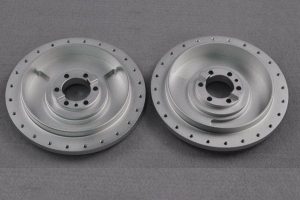Lean operations are a type of strategy that boosts organizational results with less work. It relies on streamlining processes to add value for customers.
This customer-centric approach has numerous benefits and is deeply rooted in business goals. However, to achieve this level of zen, businesses need to find efficient ways to optimize all elements of business processes and employee performance.
According to Lean Enterprise Institute, the following three categories are crucial:
- Tasks that add value (products or services)
- Activities that don’t add value but support value-added tasks
- Waste
‘Waste’ is any process or action that hinders production or generates additional costs. The seven major ‘wastes’, according to the same source, are:
- Overproduction
- Waiting
- Conveyance
- Processing
- Inventory
- Motion
- Correction
Overproduction refers to any excess product or service. The quantity should align with the actual needs to avoid excess inventory, which can be costly to maintain and store.
Waiting refers to employees wasting their time due to a lack of information or instructions.
Conveyance refers to any flaws related to transportation.
Processing refers to any waste related to inefficient production methodologies and tech.
Inventory refers to any waste linked to products not being used promptly.
The motion refers to any waste linked to people or equipment being moved unnecessarily during production.
Correction refers to products that do not meet the quality standards.
An International PEO service can help businesses expand into global markets by managing HR and employment-related tasks in foreign countries, simplifying the process of going global.
Principles of Lean Operations
There are five principles of lean manufacturing, as follows:
- Value — Customers’ willingness to pay for products/services.
- Mapping the value stream — Analyzing resources used in the production of products/services.
- Flow — Streamlining processes, minimizing production delays and waste.
- Pull system — Assigning work only when there is demand (as opposed to MRP systems).
- Perfection — Process improvement rooted in assessments leading to reduction of waste.
Understanding Lean Operations
Understanding lean operations is crucial given that workplace digitalization is gaining momentum. For many people, things are developing too rapidly and numerous employees are complaining about not receiving the needed support (training programs included).
Address this issue that is only going to become more complex rather than simplified, immediate action is called for. The first step to take is to improve internal processes and thus boost the value proposition and organizational agility.
Different businesses will benefit from different approaches, but some steps are universally recommended.
Hereby mentioned are some of the universalities every brand can deploy.
Distribute Standard Operating Procedures
First of all, it is essential to review all processes and procedures and define which ones can be modernized and streamlined.
However, because everyone will need to adapt, management should set it in writing and distribute it to all employees. Optimally, the manual should be accessible to everyone digitally at all times.
The process equals setting up new standard operating procedures (SOP), which should be divided into smaller steps leading to the ultimate goal. SOPs should include both general- and specific steps for each procedure so that every employee knows their exact role.
Set up Your SEO Strategy for Growth
SEO for growth is certainly needed by everyone, as the majority of activities are nowadays happening online. Needless to say, every business that means business has to create a stellar webpage that will demonstrate its relevance, expertise, and offer.
SEO is a continual effort, so it is recommended to optimize the company website for growth from scratch. The practice will help you cut your marketing budget back because of the site traffic and search visibility you’re getting.
In addition, SEO goes a way in cementing brand reputation, so this step is recommended to all businesses, regardless of their industry and niche.
Empower Employees to Reach Their Full Potential
Startups know that success depends on the engagement of everyone involved in their operations. This is what agile methodologies (which were originally introduced by startups to disrupt established business models) are based on.
Lean operations should empower employees to reach their full potential. Of course, this isn’t either easy or fast. Regardless, processes should be set up to help employees move towards the goal consistently.
For starters, it is essential to provide equal training options to everyone (frontline teams included!). The focus should be on the optimal placement of employees so that everyone can serve a vital function.
Optimize Production Time
Optimizing production time is one of the biggest aims businesses attempt to achieve. The reasons are more than clear: streamlining and standardization boost production rates, which, in turn, increase RoI and decrease production costs.
However, there is no one-size-fits-all approach in terms of guidelines; each business needs to find the optimal formula. General advice is to educate the workforce and use new tech in this regard but as to which approach each business will adopt is entirely individual.
Polish Inventory Management
Inventory management can be tricky but it is essential. Optimization in this department leads to minimized storage needs and prompt responses to customer demands.
One idea of how to get things rolling is to use a warehouse management system (WMS).
A WMS optimizes all warehouse procedures by helping businesses keep track of resources and items as they enter and exit the warehouse. The system also tracks the inventory in real-time (facility and transit included).
Lean Is the Future
Lean manufacturing aims to streamline processes and procedures, eliminate waste, and maximize productivity. All these are complex processes by definition, meaning that strategies and manuals should be drafted.
Continual assessments should be upheld and manuals distributed to all employees (not only managers).
The seven types of waste are challenging in their own right, but of late, an eighth waste has been defined by organizations abiding by lean principles: unused talent.
Therefore, talent acquisition and management should be included in the mixture but, as to the best practices, there is no generalized approach.
Overall, lean operations stand to reason as every business naturally desires to streamline processes, make its workforce empowered and efficient, reduce costs, and boost RoI. Exactly where each business will start is entirely individual.











